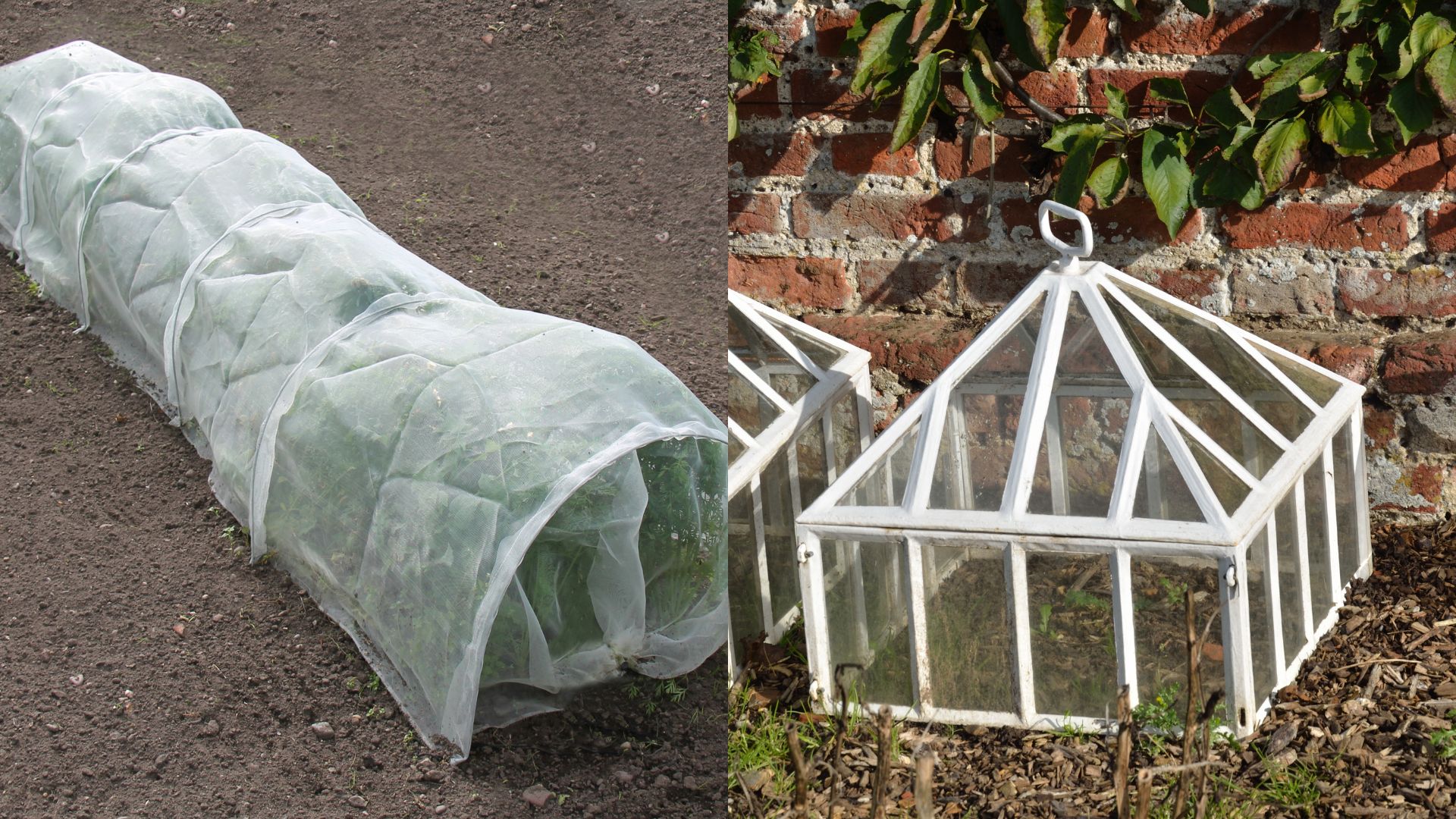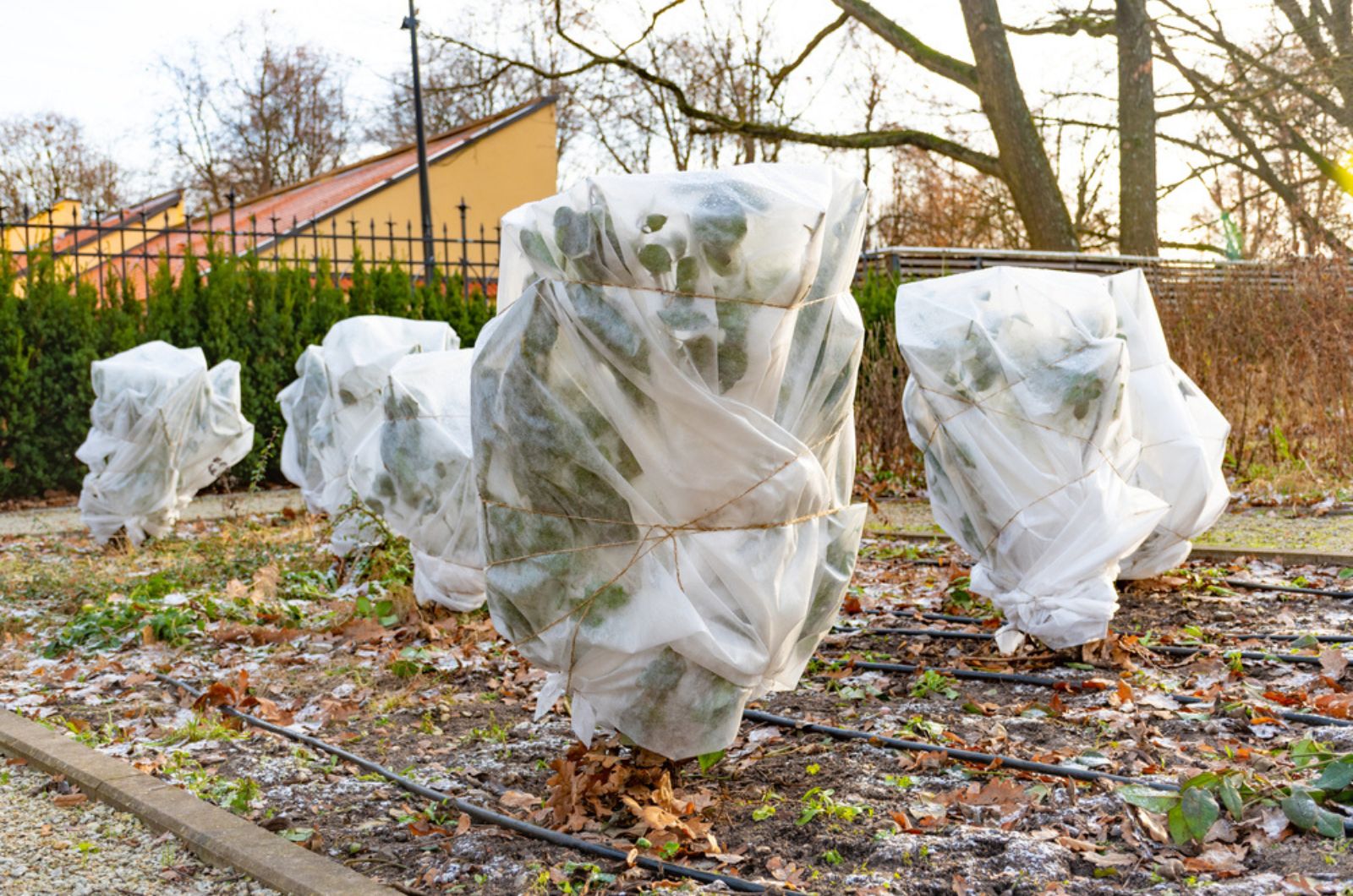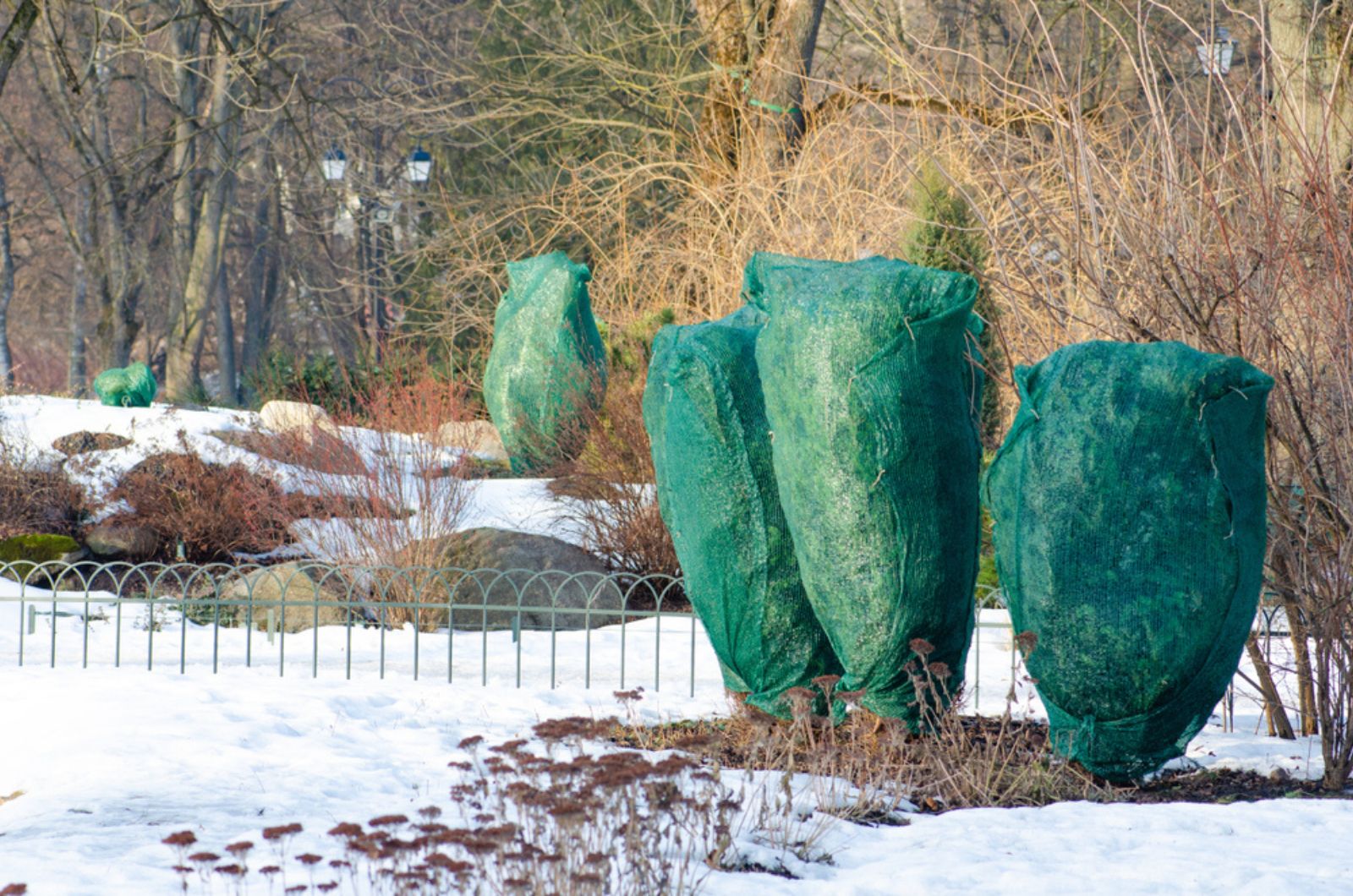When frost starts knocking, your outdoor plants need a warm hug!
Giving your plants protection from freezing temperatures is crucial if you want to keep them alive, but the real question is how to do it properly?
Lucky for you, there are some easy-peasy ways to shield them. Let’s discover some simple things you can use to wrap your plants in a snug blanket, keeping them happy despite the cold!
Here are 5 durable materials that you can use to shield your outdoor plants from frost.
1. Mulch
You’ve probably already heard that mulch helps to retain moisture and suppress weed growth. But did you know that mulch is also great for protecting your plants from freezing temperatures?
That’s right, mulch like wood chips, leaves, and straw serve as a temperature insulator, making sure that the soil and plant’s roots stay nice and warm!
If you want to use mulch to protect your outdoor plants from frost, then you should apply a thick layer of mulch, focusing around the base of your plants. This layer will prevent the roots from freezing by keeping the soil temperature more stable.
Most plants that grow in the ground during colder months are already resistant to lower temperatures. However, there’s no need to add mulch to those that grow in containers because you can simply bring them indoors.
Related: What Is Leaf Mulch And How You Can Make It?
2. Plastic Sheeting
Plastic sheeting is a cost-effective and widely accessible option that creates a robust barrier against frost. While it is relatively easy to use and provides good protection from cold winds and freezing temperatures, there can be potential issues you should take into account.
For instance, transparent plastic sheets can readily trap moisture, which can freeze overnight. It’s crucial to monitor ventilation to prevent excessive condensation and potential moisture-related issues.
This is why you should remove the covers during the day and let your plants absorb sunlight. You will avoid overheating, which is a major issue for those who live in regions with mild winters.
You might find this useful: 10 Steps For Installing Floating Row Covers To Prolong Your Growing Season
3. Horticultural Fleece
Horticultural fleece is a perfect choice for a gentler touch!
It is made out of breathable fabric that allows air and moisture exchange, thus creating a microclimate that protects plants from frost while preventing excessive humidity buildup.
Horticultural fleece is lightweight and quite easy to handle, making it a versatile choice for different types of plants. It can also offer protection against pests and be used to prolong the growing season.
What’s great is that horticultural fleece won’t affect the plant’s growth – your plants will keep on growing and thriving even though they are covered with frost-protecting fabric. It’s important to note that you shouldn’t use it for winter-blooming plants.
4. Burlap
Burlap is the best durable and eco-friendly choice for protecting your plants against freezing temperatures and cold wind. This coarse, woven fabric acts as a breathable yet insulating layer, and is also made out of vegetable fibers!
Burlap can be draped over plants, creating a protective barrier that allows air circulation while shielding them from harsh weather conditions. Simply wrap burlap around your plants but don’t make it too tight.
Another way to provide protection from the cold is to make burlap screens and attach them to wooden pegs buried in the ground.
5. Cloches
Elegant cloches can be used to protect plants from spring and fall frost. These dome or bell-shaped covers, typically made from glass or plastic, create a mini greenhouse effect for individual plants!
Acting as a physical barrier against frost, cloches trap and retain heat from sunlight during the day, thus creating a warm environment for enclosed plants. This method is particularly effective for delicate seedlings and early bloomers.
They can also shield your plants from wind and pests, but also add a sophisticated touch to your garden’s aesthetics.
By incorporating any of these options, I’m sure that outdoor plants will survive the harshest growing conditions. However, I would still recommend container gardening because it’s easier to bring plants indoors once the temperatures drop below freezing.
If you use cloches, you can save them for later use in propagation. Here’s more information: Learn All About The Dollar Tree Garden Gem For Effortless Plant Propagation



